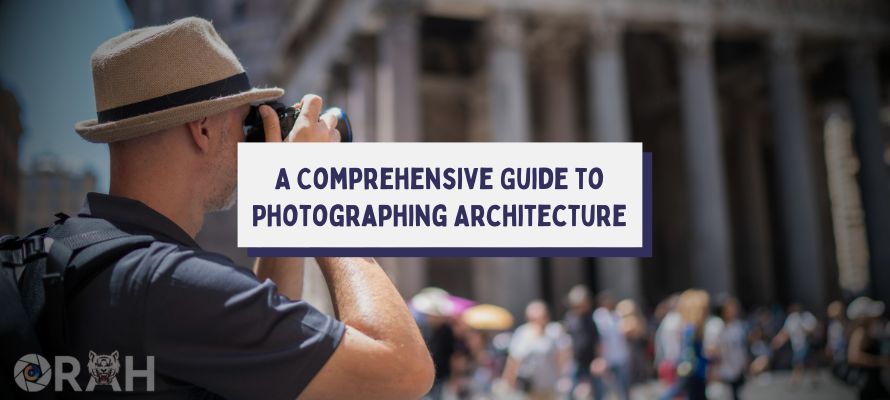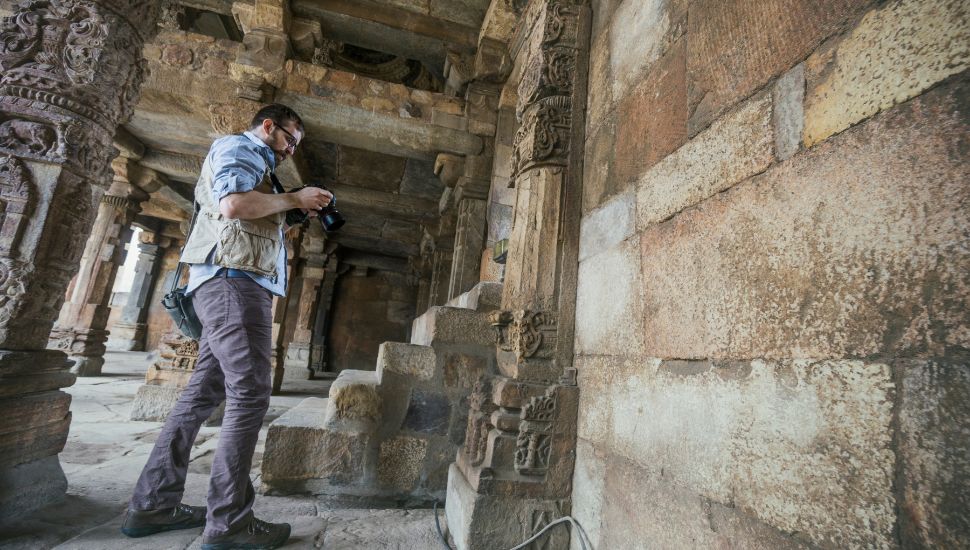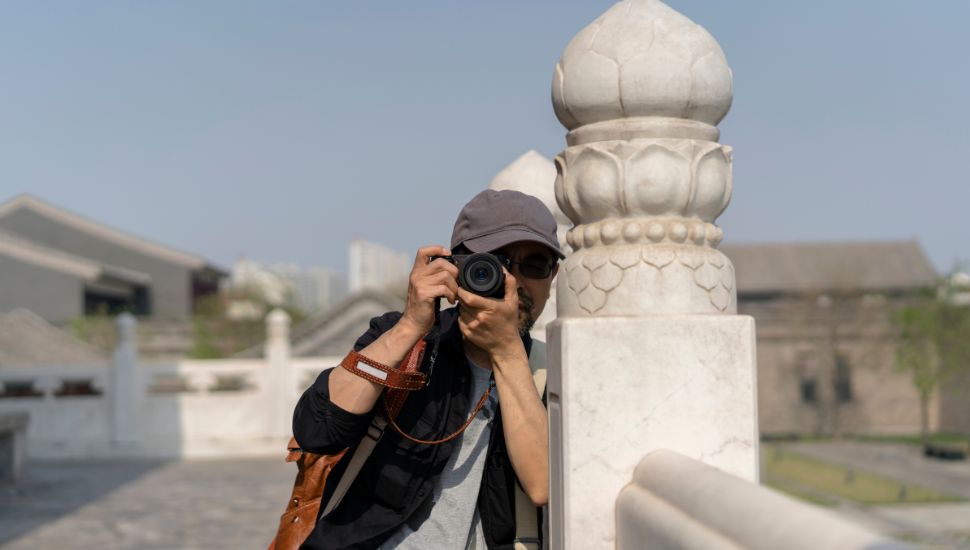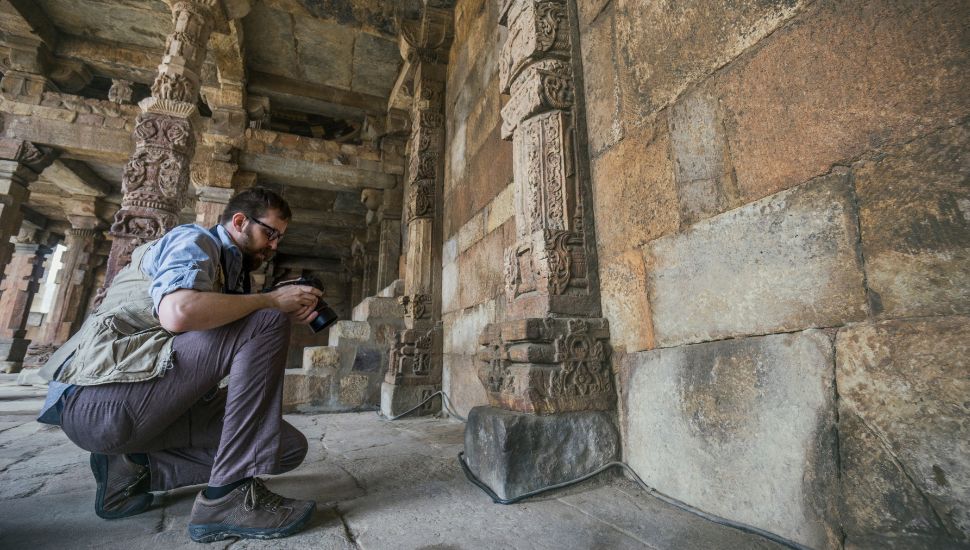
Architectural photography is a specialized genre that focuses on capturing the beauty and essence of buildings and structures.
It is an art form that requires a keen eye for detail, an understanding of composition and lighting, and the ability to capture the unique characteristics of each architectural style.
Architectural photography is not only important for documenting and preserving the work of architects and designers, but it also plays a crucial role in various fields such as real estate, advertising, and tourism.
Architectural photography serves as a visual representation of a building or structure, allowing viewers to appreciate its design, form, and function.
It can be used by architects and designers to showcase their work and attract potential clients. Real estate agents often rely on architectural photography to showcase properties and entice buyers.
In the advertising industry, architectural photographs are used to promote products or services that are related to the built environment.
Additionally, architectural photography plays a significant role in promoting tourism by capturing iconic landmarks and architectural wonders around the world.
Understanding the Basics: Camera Angles and Composition
Camera angles and composition are essential elements in architectural photography as they can greatly influence the overall impact of an image.
The choice of camera angle can emphasize certain aspects of a building or structure, highlight its unique features, or create a sense of drama.
When photographing tall buildings or structures, shooting from a low angle can make them appear more imposing and grand.
On the other hand, shooting from a high angle can provide a different perspective and showcase the surrounding environment.
Composition is another crucial aspect of architectural photography. It involves arranging the elements within the frame to create a visually pleasing image. The rule of thirds is commonly used in architectural photography to create balance and harmony.
By dividing the frame into nine equal parts using two horizontal lines and two vertical lines, photographers can place key elements along these lines or at their intersections to create a more visually appealing composition.
Additionally, leading lines can be used to guide the viewer’s eye towards the main subject of the photograph.
The Importance of Lighting in Architectural Photography
Lighting plays a vital role in architectural photography as it can greatly enhance or detract from the overall quality of an image.
The right lighting can bring out the textures, colors, and details of a building or structure, while poor lighting can result in flat and uninteresting photographs.
There are two main types of lighting used in architectural photography: natural lighting and artificial lighting.

Natural lighting refers to the use of sunlight to illuminate a building or structure. The quality and direction of natural light can vary depending on the time of day, weather conditions, and location.
Photographers often prefer shooting during the golden hour, which is the period shortly after sunrise or before sunset when the light is soft, warm, and diffused. This type of lighting can create a beautiful glow and add depth to architectural photographs.
Artificial lighting, on the other hand, involves the use of artificial light sources such as flashlights, strobes, or continuous lights to illuminate a building or structure.
This type of lighting is often used in interior shots where natural light may be limited or insufficient.
Artificial lighting allows photographers to have more control over the intensity and direction of light, enabling them to highlight specific areas or create a desired mood.
Choosing the Right Time of Day for Your Shot
Choosing the right time of day for your shot is crucial in architectural photography as it can greatly impact the overall mood and atmosphere of your images.
Different times of day offer different qualities of light that can dramatically change the look and feel of a building or structure.
The golden hour, as mentioned earlier, is a popular time for architectural photography due to its soft and warm light. During this time, the sun is low on the horizon, casting long shadows and creating a beautiful golden glow.
This type of lighting can add depth and dimension to architectural photographs, as well as create a sense of warmth and tranquility.
Another favorable time for architectural photography is the blue hour, which occurs shortly before sunrise or after sunset. During this time, the sky takes on a deep blue color, providing a unique and ethereal backdrop for buildings and structures.
The contrast between the warm artificial lights of the buildings and the cool blue sky can create a striking and dramatic effect.
Midday, when the sun is directly overhead, can also be a suitable time for architectural photography, especially if you want to capture sharp and detailed images.
However, the harsh and direct sunlight during this time can create strong shadows and high contrast, which may not be ideal for certain architectural styles or compositions.
Using Natural Light to Enhance Your Images
Natural light is a powerful tool in architectural photography that can be used to enhance your images and create different moods.
By understanding the characteristics of natural light and how it interacts with buildings and structures, photographers can capture stunning photographs that showcase the beauty and uniqueness of each architectural style.

Direct sunlight can create strong contrasts between light and shadow, highlighting the textures and details of a building or structure. This type of lighting is often used to emphasize the form and shape of modern or minimalist architecture.
However, it is important to be mindful of harsh shadows that can obscure important details or create distracting patterns.
Diffused light, such as that during the golden hour or on overcast days, can create a soft and even illumination that is ideal for capturing the intricate details and textures of historical or ornate architecture. This type of lighting minimizes harsh shadows and creates a more balanced exposure.
Backlighting is another technique that can be used to create dramatic and atmospheric images. By positioning yourself so that the light source is behind the building or structure, you can create silhouettes or capture interesting patterns created by light passing through windows or other architectural elements.
Artificial Lighting Techniques for Indoor Shots
When photographing the interiors of buildings or structures, artificial lighting techniques are often necessary to compensate for the lack of natural light or to create a desired mood.
There are several types of artificial lighting that can be used in architectural photography, each with its own unique characteristics and effects.
Continuous lights, such as LED panels or tungsten lights, provide a constant and even source of illumination. They are often used in architectural photography to evenly light large spaces or to create a soft and diffused light that mimics natural light.
Continuous lights are particularly useful when shooting interiors with mixed lighting conditions, as they can be adjusted to match the color temperature of existing light sources.
Strobes or flashes are another type of artificial lighting commonly used in architectural photography. They provide a powerful burst of light that can be used to highlight specific areas or create dramatic effects.
Strobes are often used to add depth and dimension to interior shots by creating highlights and shadows.
Light painting is a technique that involves using a handheld light source, such as a flashlight or LED wand, to selectively illuminate different areas of a building or structure.
This technique allows photographers to have complete control over the direction and intensity of light, enabling them to highlight specific details or create unique and artistic effects.
Capturing the Details: Close-Up Shots and Macro Photography
Capturing the details is an important aspect of architectural photography as it allows viewers to appreciate the craftsmanship and intricacies of a building or structure.
Close-up shots and macro photography are techniques that can be used to capture these details in a visually compelling way.
Close-up shots involve getting closer to the subject and focusing on specific details or elements of a building or structure.
This technique allows photographers to highlight interesting textures, patterns, or architectural features that may go unnoticed from a distance.

Close-up shots can also be used to create abstract or minimalist images by isolating certain elements or details.
Macro photography takes close-up shots to the next level by using specialized lenses or extension tubes to capture extreme close-ups of small details.
This technique is particularly useful when photographing architectural details such as ornate carvings, intricate mosaics, or delicate stained glass windows.
Macro photography allows photographers to reveal the hidden beauty and intricacies of these details that may not be visible to the naked eye.
Architectural Styles and Their Unique Photographic Challenges
Different architectural styles present unique challenges in terms of composition, lighting, and capturing the essence of each style.
It is important for photographers to understand these challenges and adapt their techniques accordingly to capture the true spirit of each architectural style.
Modern or minimalist architecture, characterized by clean lines, simple forms, and a focus on functionality, often requires a straightforward and uncluttered composition.
The challenge lies in capturing the essence of the design while avoiding a flat and uninteresting image.
The use of strong lines, geometric shapes, and negative space can help create a visually striking photograph that reflects the simplicity and elegance of modern architecture.
Historical or ornate architecture, on the other hand, presents its own set of challenges. The intricate details, elaborate decorations, and rich textures can be overwhelming if not captured properly.
It is important to pay attention to lighting and composition to ensure that these details are showcased in a balanced and visually pleasing way.
Close-up shots and macro photography can be particularly effective in capturing the fine details and craftsmanship of historical architecture.
Tips for Shooting Skyscrapers and High-Rise Buildings
From the construction to the completion of high-rise buildings, high-rise photography has attracted the attention of countless photographers.
Shooting skyscrapers and high-rise buildings can be challenging due to their sheer size and height.
These structures often dominate the skyline and can be difficult to capture in a way that does justice to their grandeur and scale.
Here are some tips for shooting skyscrapers and high-rise buildings:
- Find a unique perspective: Look for vantage points that offer a different perspective or angle of the building. This could be from a nearby rooftop, a bridge, or even from the ground looking up.
- Use leading lines: Look for leading lines in the surrounding environment that can guide the viewer’s eye toward the building. This could be a road, a pathway, or even the lines of the building itself.
- Incorporate the surrounding environment: Consider including elements of the surrounding environment in your composition to provide context and scale. This could be other buildings, people, or natural elements such as trees or water.
- Experiment with different times of day: Different times of day can dramatically change the look and feel of a skyscraper or high-rise building. Try shooting during the golden hour or blue hour to capture the building in a different light.
- Pay attention to reflections: Skyscrapers often have reflective surfaces that can create interesting and abstract reflections. Look for opportunities to capture these reflections in your photographs.
Post-Processing Techniques for Enhancing Your Images
Post-processing is an important step in architectural photography as it allows photographers to enhance their images and bring out the full potential of their photographs.
There are several post-processing techniques that can be used to enhance architectural photographs:
- Adjusting exposure and contrast: Fine-tuning the exposure and contrast can help bring out the details and textures of a building or structure. This can be done using tools such as levels, curves, or contrast adjustments.
- Correcting perspective distortion: When photographing tall buildings or structures, perspective distortion can occur, making them appear skewed or leaning. This can be corrected using tools such as the transform or perspective correction tools in post-processing software.
- Enhancing colors and tones: Adjusting the colors and tones can help create a desired mood or atmosphere in architectural photographs. This can be done using tools such as the saturation, vibrance, or color balance adjustments.
- Removing distractions: Sometimes, there may be distracting elements in the frame that take away from the main subject. These distractions can be removed using tools such as the clone stamp or healing brush.
- Sharpening and noise reduction: Applying sharpening and noise reduction techniques can help enhance the overall clarity and sharpness of architectural photographs. This can be done using tools such as the sharpening or noise reduction filters.
Mastering the Art of Architectural Photography
Architectural photography is a challenging yet rewarding genre that requires a combination of technical skills, artistic vision, and an understanding of architectural styles and elements.
By mastering the basics of camera angles, composition, lighting, and post-processing techniques, photographers can capture stunning images that showcase the beauty and uniqueness of buildings and structures.
It is important for aspiring architectural photographers to practice and experiment with different techniques to develop their own style and approach.
Each building or structure presents its own set of challenges and opportunities, and it is through practice and experimentation that photographers can learn to overcome these challenges and capture the essence of each architectural style.
So grab your camera, explore your surroundings, and start capturing the beauty of architecture through your lens.
With dedication, patience, and a keen eye for detail, you can master the art of architectural photography and create images that inspire and captivate viewers.